 | TODAY IN SCIENCE HISTORY NEWSLETTER - 26 SEPTEMBER |
| Feature for Today |
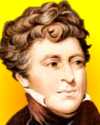 On 26 Sep 1818, Dr. James Blundell, an obstetrician, performed a human blood transfusion, the first in Great Britain. A patient at Guy's Hospital, London, who had an incurable disease agreed to the procedure. Although some benefit seemed initially to occur, the patient survived only 56 hours. On 26 Sep 1818, Dr. James Blundell, an obstetrician, performed a human blood transfusion, the first in Great Britain. A patient at Guy's Hospital, London, who had an incurable disease agreed to the procedure. Although some benefit seemed initially to occur, the patient survived only 56 hours. Blundell had previously made a series of experiments using dogs to refine his method and apparatus. Although experiments in blood transfusion had taken place with animal blood given to humans (as early as 1667) the instances had been isolated, inconsistent and deadly. Blundell's work marks the beginning of consistent research using human blood, and in the following years, some lives were saved. Since the significance of different blood types and methods of storage were discovered after 1900, blood transfusions have become a routine life-saving technique. In this biography of Dr. James Blundell, you can read of his careful research, first with dogs, that led him eventual success with humans. |
| Book of the Day | |
|
| Quotations for Today | |
 | To prove to an indignant questioner on the spur of the moment that the work I do was useful seemed a thankless task and I gave it up. I turned to him with a smile and finished, 'To tell you the truth we don't do it because it is useful but because it's amusing.' The answer was thought of and given in a moment: it came from deep down in my soul, and the results were as admirable from my point of view as unexpected. My audience was clearly on my side. Prolonged and hearty applause greeted my confession. My questioner retired shaking his head over my wickedness and the newspapers next day, with obvious approval, came out with headlines 'Scientist Does It Because It's Amusing!' And if that is not the best reason why a scientist should do his work, I want to know what is. Would it be any good to ask a mother what practical use her baby is? That, as I say, was the first evening I ever spent in the United States and from that moment I felt at home. I realised that all talk about science purely for its practical and wealth-producing results is as idle in this country as in England. Practical results will follow right enough. No real knowledge is sterile. The most useless investigation may prove to have the most startling practical importance: Wireless telegraphy might not yet have come if Clerk Maxwell had been drawn away from his obviously 'useless' equations to do something of more practical importance. Large branches of chemistry would have remained obscure had Willard Gibbs not spent his time at mathematical calculations which only about two men of his generation could understand. With this faith in the ultimate usefulness of all real knowledge a man may proceed to devote himself to a study of first causes without apology, and without hope of immediate return. |
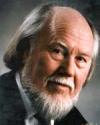 | The pilots I worked with in the aerospace industry were willing to put on almost anything to keep them safe in case of a crash, but regular people in cars don't want to be uncomfortable even for a minute. |
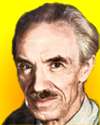 | It was during my enchanted days of travel that the idea came to me, which, through the years, has come into my thoughts again and again and always happily�the idea that geology is the music of the earth. |
| Quiz | |
| Before you look at today's web page, see if you can answer some of these questions about the events that happened on this day. Some of the names are very familiar. Others will likely stump you. Tickle your curiosity with these questions, then check your answers on today's web page. | |
| Births | |
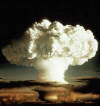 | On 26 Sep 1917, Harrison Brown was born, an American geochemist known for his role in isolating plutonium for its use in the first atomic bombs and for his studies regarding meteorites and the Earth's origin. He was one of 67 concerned Manhattan Project scientists at to sign a July 1945 petition to the President recommending warning the Japanese of the power of the atomic bomb before its use so they might surrender instead.  What is the name of the main Manhattan Project location in Tennessee at which he worked? What is the name of the main Manhattan Project location in Tennessee at which he worked? |
 | On 26 Sep 1886, Archibald Vivian Hill was a British physiologist who shared the 1922 Nobel Prize for Physiology or Medicine for discoveries concerning the production of heat in muscles, research which helped establish the origin of muscular force in the breakdown of carbohydrates. The breakdown of carbohydrates in the muscles produces what acid compound? The breakdown of carbohydrates in the muscles produces what acid compound? |
| Deaths | |
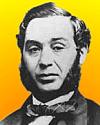 | A tailor (1829-1902) became the inventor and manufacturer of jeans. During the California Gold Rush, he hoped to manufacture tents and wagon covers. Instead, he used the stout canvas he had brought with him to make very durable pants for the Forty-niners.  What are the first and last names of this man? What are the first and last names of this man? |
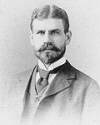 | Jesse William Lazear was an American physician (1866-1900) who was a member of a commission with Walter Reed, investigating an outbreak of a disease in Cuba, which proved the carrier was a mosquito. He was accidentally bitten by an infected mosquito, showed signs of the disease five days later, and died on the seventh day of his illlness. Of which disease did he die? Of which disease did he die? |
| Events | |
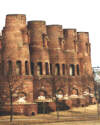 | On 26 Sep 1871, the first U.S. patent for a certain type of cement was issued to David Oliver Saylor, of Allentown, Pa. He had selected and mixed different kinds of rock from his quarries to produce the product at the first US plant in Coplay, Pa. to replace the imported product named by William Aspdin in a British patent (1852). What was this product? What was this product? |
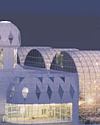 | On 26 Sep 1991, four men and four women entered the Biosphere 2, an airtight, self-contained structure. The 7,200,00 cu-ft. sealed glass and space-frame structure contained five biomes, including a 900,000 gallon ocean, a rain forest, a desert, agricultural areas and a human habitat. In which country, and where in that country, was this structure built? How long did the people manage to live isolated in it? In which country, and where in that country, was this structure built? How long did the people manage to live isolated in it? |
| Answers |
| When you have your answers ready to all the questions above, you'll find all the information to check them, and more, on the September 26 web page of Today in Science History. Or, try this link first for just the brief answers. Fast answers for the previous newsletter for September 25: that the solar system formed after gas flares were ripped from the sun by the gravitational field of a passing star, then the flares then condensed into “planetesimals,” arrayed in a spiral extending from the sun, gradually accumulated material and became the planets we know today • a metal skeleton for support of a building led to skyscrapers • indium • the decade including the year 1974 • first telephone (rather than telegraph) cable. |
| Feedback |
 If you enjoy this newsletter, the website, or wish to offer encouragement or ideas, please send feedback by using your mail reader Reply button. If you enjoy this newsletter, the website, or wish to offer encouragement or ideas, please send feedback by using your mail reader Reply button. Your click on a StumbleUpon, Google+ or Facebook social button on the site webpages is also a welcome sign of appreciation. Thank you for using them. |
| Copyright |
| To find citations for quotations go to the corresponding webpage by clicking on the “quotes” balloon icon. Sources for the thumbnails appear on today's webpage with the corresponding item. � This newsletter is copyright 2013 by todayinsci.com. Please respect the Webmaster's wishes and do not put copies online of the Newsletter � or any Today in Science History webpage. (If you already have done so, please remove them. Thank you.) Offline use in education is encouraged such as a printout on a bulletin board, or projected for classroom viewing. Online, descriptive links to our pages are welcomed, as these will provide a reader with the most recent revisions, additions and/or corrections of a webpage. For any other copyright questions, please contact the Webmaster by using your mail reader Reply button. |
--
If you do not want to receive any more newsletters, Unsubscribe
To update your preferences and to unsubscribe visit this link


Δεν υπάρχουν σχόλια:
Δημοσίευση σχολίου